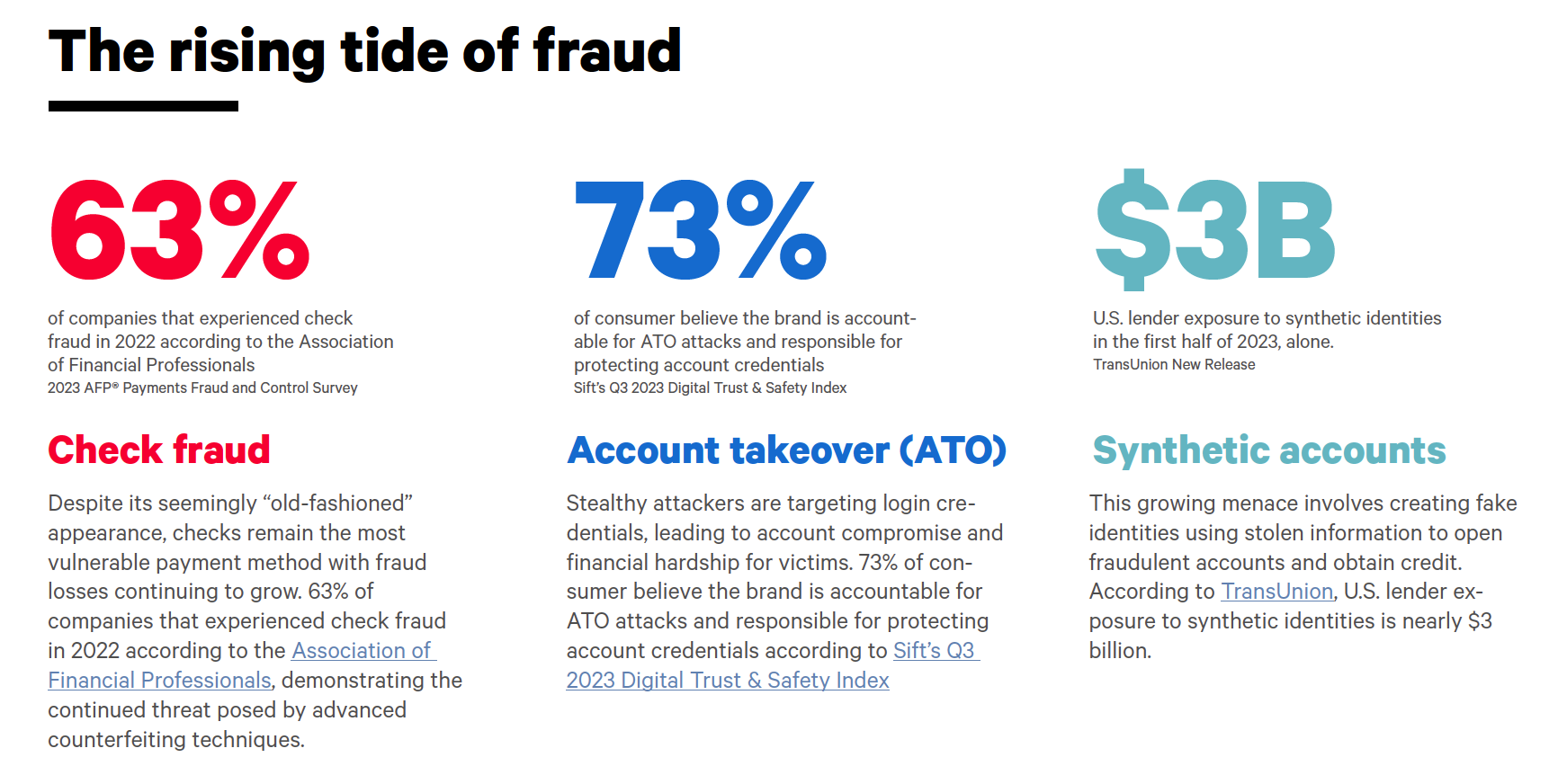Fraud remains a constant and costly threat for both consumers and their banks. According to an FTC release, consumers reported losing $10 billion to fraud, marking a 14% increase in losses over the reported period. While consumer-reported fraud grows, banks are facing their own shifting landscape. Traditional fraud detection methods may offer a sense of security, but the reality is that they are struggling to keep pace with the increasingly sophisticated tactics employed by modern fraudsters. This growing disparity necessitates continuous innovation in detection and prevention strategies, especially as banks navigate the ever-evolving digital landscape.
Three prevalent fraud schemes pose significant challenges to banks:

- Check fraud: Despite its seemingly "old-fashioned" appearance, checks remain the most vulnerable payment method, with fraud losses continuing to grow. 63% of companies that experienced check fraud in 2022 according to the Association of Financial Professionals, “2023 AFP® Payments Fraud and Control Survey”, demonstrating the continued threat posed by advanced counterfeiting techniques.
- Account takeover (ATO): Stealthy attackers are targeting login credentials, leading to account compromise and financial hardship for victims. 73% of consumers believe the brand is accountable for ATO attacks and responsible for protecting account credentials, according to Sift’s Q3 2023 Digital Trust & Safety Index.
- Synthetic account fraud: This growing menace involves creating fake identities using stolen information to open fraudulent accounts and obtain credit. According to TransUnion, U.S. lender exposure to synthetic identities is nearly $3 billion.
The financial impact of these schemes is only part of the equation. Banks also face the potential for reputational damage and a potential erosion of customer trust. In today's digital age, where security is paramount, failing to adapt to evolving fraud tactics can have significant consequences.
The imperative is clear: banks must adopt proactive, adaptive, and technologically advanced strategies to stay ahead of the curve. This necessitates embracing innovative solutions that leverage the power of data analytics, artificial intelligence, and machine learning to identify and prevent fraud in real-time, across all channels – digital, branch, and call center. By proactively addressing this critical issue, banks can safeguard their financial well-being, protect their customers, and build stronger, more trusting relationships.